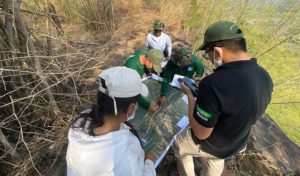A program that teaches parents how to engage with babies identified to be at high risk of autism spectrum disorder (ASD) may reduce the likelihood of the children’s developing the disorder. This finding comes from a study published today in JAMA Pediatrics.
“Autism spectrum disorder is emergent in early development but is not typically diagnosed until age 3 years,” wrote Andrew J. O. Whitehouse, Ph.D., of the University of Western Australia in Nedlands and colleagues. “[I]nterventions beginning during the first 2 years of life, when the first signs of atypical development are observed and the brain is rapidly developing, may lead to an even greater impact on developmental outcomes in later childhood.”
The intervention tested was called iBASIS–Video Interaction to Promote Positive Parenting (iBASIS-VIPP); this approach uses video of family interactions to help caregivers build up their babies’ social engagement and interaction abilities. The intervention is delivered in family homes by a trained therapist in 10 sessions over five months.
Whitehouse and colleagues recruited families of babies aged 9 to 15 months old showing behaviors associated with ASD, as measured by the Social Attention and Communication Surveillance–Revised (SACS-R) 12-month checklist. Babies were considered at risk of ASD if they displayed atypical behaviors in three of five domains: spontaneous eye contact, protodeclarative pointing (pointing to indicate item of interest), social gestures, imitation, and response to name.;
A total of 103 families were randomized to receive either usual community care (whatever services were recommended by health professionals within the family’s local community) or usual care plus iBASIS-VIPP. The researchers assessed the ASD symptoms of infants in both groups at 12 and 24 months after the study started.
Whitehouse and colleagues found that the babies whose families had participated in the iBASIS-VIPP sessions had lower ASD symptom scores (assessed with the Autism Diagnostic Observation Schedule, second edition) than the babies in the usual care group at both time points. At the 24-month assessment, only 6.7% of iBASIS-VIPP toddlers met the DSM-5 criteria for ASD, compared with 20.5% of toddlers in the usual care group.
The authors noted that the relatively low intensity of the intervention—an average of two sessions a month conducted in a family’s own home—and the absence of any observed side effects point to the viability of using iBASIS-VIPP at a broad level. “A cost-effectiveness analysis of the entire treatment pathway (incorporating screening and service delivery) and modeling of longer-term childhood and adulthood outcomes is an important next step to determine the feasibility and value of this clinical model.”
To read more about this topic, see the Psychiatric News article “Assessment and Treatment of Autism Spectrum Disorder.”




